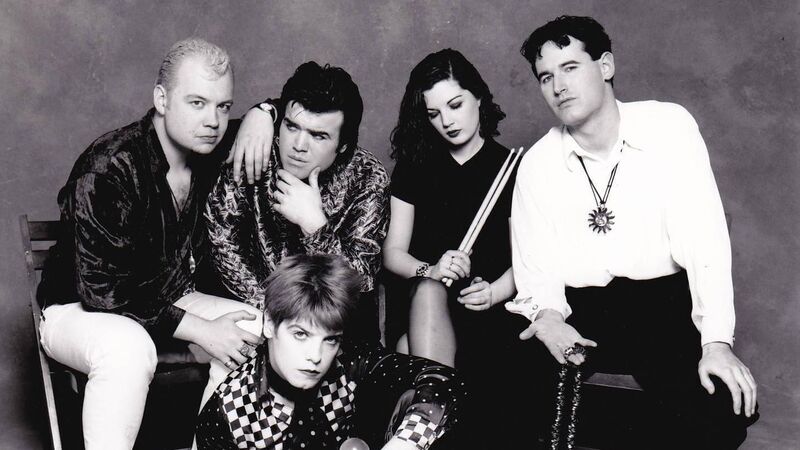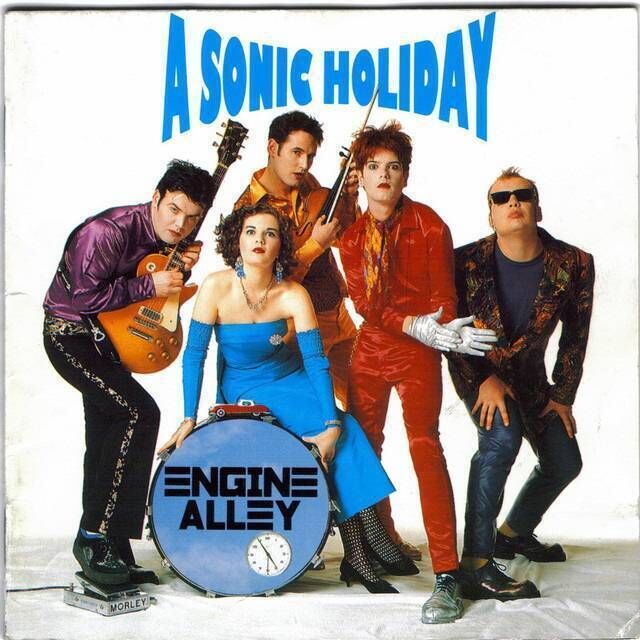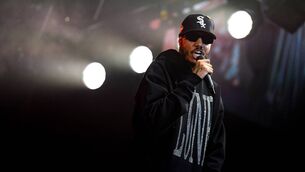Ireland in 50 Albums, No 36: A Sonic Holiday, by Engine Alley

Engine Alley released A Sonic Holiday in 1992, on the Mother label.
On a balmy August evening in 1993, Engine Alley’s Canice Kenealy stepped in front of an audience of thousands – and felt completely alone. “It's a bit like playing to nobody really. There’s thousands of people there. But it’s just so big – the biggest crowd we played to.”
Engine Alley were performing at the old Páirc Uí Chaoimh as support to U2 on the Irish leg of their ZooTV Tour. The two groups were not quite friends, but there was a professional relationship: Engine Alley were signed to U2’s Mother Records, which had released their brilliantly esoteric debut LP, 10 months previously.
But from those highs, there was a long way down for Engine Alley. When Kenealy thinks back to Zoo TV and that brief intersection with the biggest band in the world, it is with a degree of ambivalence. Engine Alley achieved a lot – critical acclaim, a loyal fan base around the country – but might they have gone further, done more? The thought doesn’t keep him awake at night – but it does ever-so-slightly haunt him.
With their brilliantly jangly sound and glittering choruses – think Suede meets The Smiths, with sprinklings of Mott the Hoople and The Go-Betweens – they were the right band at the right time. And what a time that was – the early 1990s, and the glory days of Irish indie music. Whether it was the Sultans of Ping and the Frank and Walters in Cork, Therapy? and the Divine Comedy in Northern Ireland, or Dublin groups such as My Bloody Valentine, everywhere you looked, Irish alternative rock was on the front step.
Still, even amongst all those artists, Engine Alley and stood out as special. Weird, sometimes whimsical, difficult to define, impossible not to love—it was a classic piece of outsider rock inevitably lost on the masses piling into the Páirc to see Bono pretend he knew what irony meant.
The record showcased the melodic, dreamy songwriting of Canice and his brother Brian. But along with great tunes such as and the five-piece were a sight to behold, their riot of feather boas and mascara harking back to punk bands such as the New York Dolls.
Things didn’t work out quite as they might have hoped—and Canice, while not bitter, still has strong feelings about how they were treated. Yet with they created an enduring classic—a record that, to this day, is difficult to pin down.
It has great pop songs. But it is also more experimental than much Irish music of that time – the LP clocks in at weighty 18 tracks and, alongside chiming guitars and Kenealy’s falsetto, featured violin by Kenneth Rice. Once listened to, it is never forgotten – and having made it to streaming, it has never been easier to revisit.
Canice and Brian grew up in Kilkenny, but Engine Alley started in Dublin, where the siblings had moved to attend UCD. “I left Kilkenny in 1988, after I finished school. The roots of the band would be myself and Eamonn [Byrne], the bass player. We played together in the mid-80s. We had a band – The Rejected. Myself Eamonn and used to busk on the streets of Kilkenny. My brother Brian was seven years older. He was already in Dublin a good while. I started writing songs with him.”
They began Engine Alley in 1989 —the name taken from a laneway in Dublin’s Liberties. Their timing was perfect. Dublin rock had finally escaped the shadow of U2: there was room for young artists to be something other than Bono wannabes. “There was no shortage of venues or bands,” says Canice. “That was '89. We went at it full time.”
They soon expanded the lineup to include Emmaline Duffy-Fallon as a drummer. To have a female band member – a drummer at that - was a huge novelty in Irish music at that time and, to Engine Alley’s astonishment, it became a talking point.
“I find it kind of bemusing how much of a fuss people still make about it or how much of a fuss was made of it,” says Kenealy “We always saw her as a human being who was a brilliant drummer and a brilliant singer. “ With Duffy-Fallon on drums, things started to happen for Engine Alley. They soon had a record deal, though, with a stint in the tail, as we shall see.
“Myself and Eamonn were living on a flat on Capel Street. That became the Engine Alley headquarters,” says Kenealy. “Brian lived around the corner. We played a couple of gigs with a drum machine and then Emmaline came on board. We did a demo. We went down to Kilkenny and played a lucrative enough gig – we drew in a lot of people. I think it was about 200. We were able to pay for a demo. That demo got us a TV spot on [RTÉ youth show] That led to a Fanning Session. And then Pete Holidai heard the Fanning Session.”
Holidai was a veteran of the Dublin alternative scene, a member of ground zero punks The Radiators from Space – and by the early 1990s, an in-demand producer of younger bands. When he heard Engine Alley, he recognised their potential immediately.
“He contacted us and wanted to get involved,” says Kenealy. “He was kind of like a guru, an older brother, an uncle. He was an old punk and he wanted to record us. He wanted us to do a really good demo. He brought us into Sonic Studios on Gardiner Row [since relocated to Stoneybatter]. That was where he used to produce bands. In the summer of 1990, we did this demo with him and we got a record deal out of that basically. We signed a deal with Mother Records. There was a bit of interest out of CBS as well. The demo was and We did and on a TV show that autumn.”

Signed to Mother, Engine Alley started work on at Windmill Lane 2 – a satellite of U2’s recording HQ located in the centre of Dublin and the studio where The Police demoed and in the spring of 1980. There was another U2 connection in producer Steve Lillywhite, who had worked on and
“He was a very good organiser. He just knew how to get a record made,” recalls Kenealy. “All of Steve Lillywhite’s stuff sounds different – there isn’t really a Steve Lillywhite sound. I think a record sounds like the studio or the band.”
The recording went smoothly. Only afterwards did problems emerge. Engine Alley were surprised to discover that Mother had no arrangement in place for the LP to be distributed outside Ireland. Having gone with Mother, they had turned down bigger international labels that would have put their music in stores in the UK and on the Continent.
“I don’t know what to say about this: it wasn’t what we thought it was. They didn’t actually have it set up. There was a swarm of A&R people from record companies who came to Ireland and signed bands. We didn’t get signed by those foreign record companies. We already had a deal. But when it came time to release a record, they didn’t have it [intentional distribution] in place. Any time there is anything written about us, it always comes up. I don’t want to be the little guy complaining about the big guy. It became very frustrating. I find it hard to revisit it because it was such an intense experience. I’m also very happy. I’m glad the album is there. It’s up there now on streaming.”
They crossed paths with Bono on a few occasions, but there wasn’t much of a relationship. “We didn’t meet them as much as you would think,” Kenealy says. “It’s a bit of a circus…I wasn’t prepared for the couple of times I met him [Bono] to wait in line with all the courtiers.”
Engine Alley released their second album, in 1995, by which time they had relocated to London (where Lillywhite and his wife Kirsty MacColl looked out for the newcomers). But their momentum stalled and they drifted apart.
Today, Canice works for a renewable energy company and continues to make music with his own project, Rigmarole, while Engine Alley perform on an ad hoc basis (they try to play at least once a year). So they are still with us – but even if they weren’t, there’s always the beautiful, baffling, brilliant,
“There are two ways you can look it. It’s heaven or hell. It’s either a success or a failure,” says Kenealy. “What’s a failure? Anyway, if it is a failure, there’s nothing wrong with failure. Life is failure. You have to grow, you have to fail you have to grow. I’m just glad it happened.”
- You can see the other albums in this series at www.irishexaminer.com



